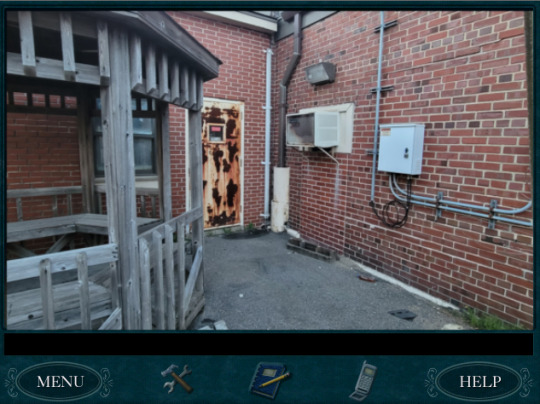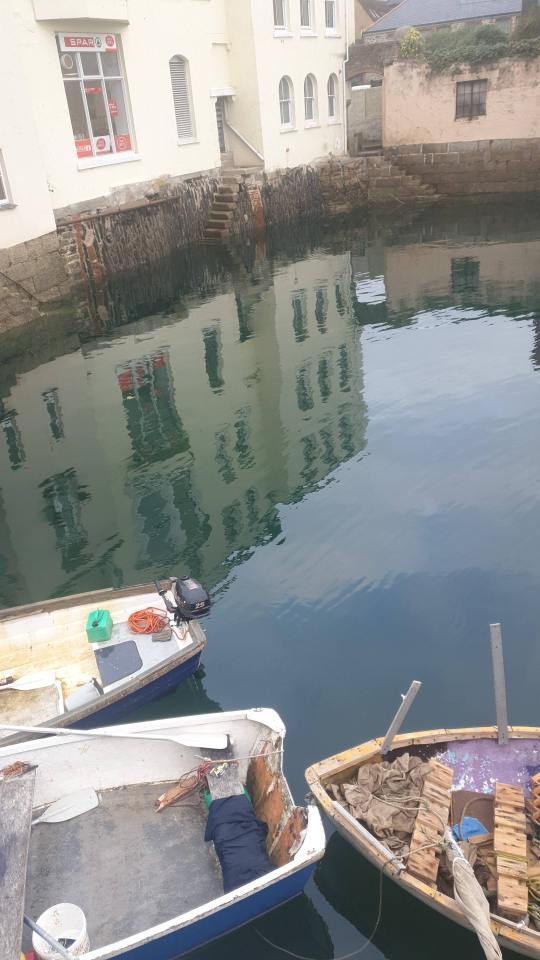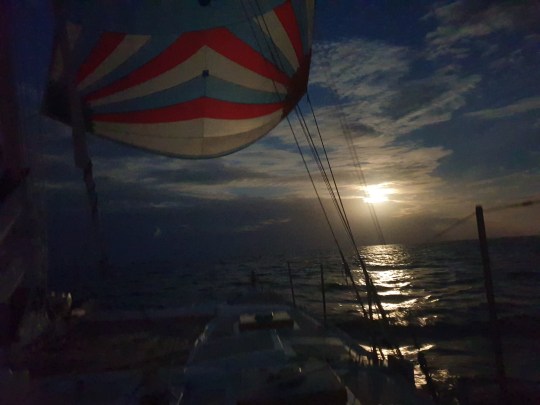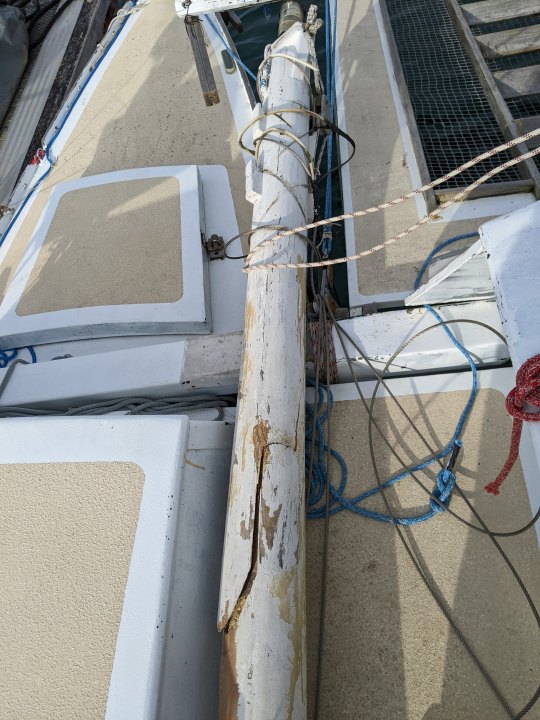#clew crew
Explore tagged Tumblr posts
Text


#how I felt every driving section in TOT#nancy drew#her interactive#nancy drew games#clue crew#clew crew#nancy drew pc games#trail of the twister
47 notes
·
View notes
Text
Things I Never Noticed About Treasure in the Royal Tower

Isn’t it like idk hard to purchase a tower from another country and transport it to the US? Especially in the 20s?? Like wouldn’t the French government be like no
I wish we could have Hiked to Butter Lovers Lake. I will now forever wonder if it was yellow
None of the activities mentioned in the Wickford Castle brochure Nancy can do
I all my game plays as a child till high school I never noticed the operator number on the phone, and have only in the last few years realized you could call the front desk
For just arriving Nancy really made herself at home unpacking all of her things, she’s even got mail on the vanity
How on earth does Nancy sleep with the broken radiator hissing like that???
Did Dexter know about the hidden study in the library?
The bugs have names!
I get that what Dexter did was bad, but completely disowning him and annulling the adoption seems a tad bit excessive
I never realized you could blow the candle out in the secret room, I always left with it still burning
When does Hotchkiss sleep? If she is in the lobby from 3-6am and then begins working again once she gets back to her room that's like half the night. Does she take a mid afternoon nap?
Did Lisa know who all had medallion pieces of the tiara? Or was it just a coincidence that she happened to visit the castle after Dexter and Jacque got hired and Hotchkiss decided to travel there to work on her book? Cause her plan would not have worked otherwise
How did Jacques not hear Nancy banging on the door after getting locked outside?
How exactly did Lisa just follow Nancy down into the tunnel leading to the tower? Like it doesn't make much since that she would just know Nancy preset the elevator to be on the middle floor so she could go in through the library, crawl through the vents, and then go through the hidden door usually blocked by the elevator?
#nancy drew games#nancy drew pc games#her interactive#treasure in the royal tower#clew crew#nancy drew#clewcrewplaythru
31 notes
·
View notes
Text
This is giving some real “whales rule” vibes

#nancy drew games#her interactive#Nancy drew#danger on deception island#DDI#I should replay that one#clue crew#clew crew
3K notes
·
View notes
Text

#nancy drew#her interactive#nancy drew games#clue crew#clew crew#nancy drew pc games#jake rogers#secrets can kill
25 notes
·
View notes
Text
Things I Never Noticed About Danger on Deception Island

This was the second Nancy Drew game I ever played and it still remains one of my favorites. The overall game storyline is amazing, I love how it incorporates the mysterious appearance of the orca with the history of the area. But man is there a lot of back and forth traveling.
I never caught that Katie’s research was on deep sea parasitic growth or that she even did research at all
The sad part about playing this game is knowing you grew up in Washington, but you never went to the Puget Sound Islands or had clam chowder
Apparently you can have a PhD on the study of sea monsters
Nancy's fixation on finding Andy Jason all because of a business card
The audio game really should keep the ones lite you have correct if you miss one
So how long would Hilda have waited for someone to piece together all her coordinates and discover the box on the hidden beach before taking matters into her own hands?
I always forget Hilda was the mayor
I just gave Katie a sandwich without leaving to go make a sandwich…
This is the second Nancy drew game I’ve ever played and I’ve only ever been able to trigger the convo with Holt about the Atlantic Herring once
It would be so nice if you could leave/enter underground tunnel from the lighthouse without having one of the two doors be locked
So what exactly was Andy's plan after purposely bringing Nancy to where he was doing the smuggling? Did he really think his men would kidnap her as soon as she was on board?
#her interactive#nancy drew games#nancy drew pc games#nancy drew#clew crew#clewcrewplaythru#danger on deception island
24 notes
·
View notes
Text
"Two, six - heave"
As is usual with sailors, the person at the head of the team usually calls out the "two, six" part. All members move their hands up the line, ready to pull. This is followed in a natural rhythm by the "lift", which is shouted by the whole team together. At this moment, the team simultaneously leans back on the line and uses its leg muscles to exert a powerful pull on the line. This coordination takes some practice, but the difference in applied force between a group pulling as individuals and a skilled team pulling together is very large.
There is no standardised tempo or cadence for the term as this depends on the task at hand. For example, hauling in the topsail requires a long, heavy pull; if the team is not to be exhausted halfway through, the leader must ensure that the pace is slow enough to keep the whole job going. Hauling in a clew line, on the other hand, is relatively quick and easy, so the singing can be quite fast. It is also not always necessary to use this type of hauling for the entire job; often the first part of the job can be done by simply pulling hand over hand, while moving to a co-ordinated hoist for the final tightening.
After a line has been pulled taut on a ship, it is usually attached to a belaying pin.
In the UK, the term has a broader meaning and is often used in any situation where co-ordinated hauling is required, often involving seafarers, but almost as often when 'civilians' are working together.
It is widely believed that the term dates back to the orders used when firing shipboard guns in the British Royal Navy. According to this story, the team of six gunners had numbered roles. Once loaded, it was the job of the men numbered two and six to hoist the cannon (co-ordinated) out of the gun port for firing, requiring a simple effort for light guns and one pulley per man for larger guns. However, there are a number of problems with this theory: Firstly, two men would not be enough to pull out a cannon that could weigh more than two and a half tonnes. Secondly, the numbers two and six would be on the same side of the gun (the even numbers on one side and the odd numbers on the other). Thirdly, the use of the begirff, because in the literature before the First World War, but especially before 1911, the term is not mentioned and certainly not in the nautical sense. The first nautical use of the term only dates back to 1968, before which it was often associated with prisoners and railway construction work in Asia.
In square-rigged sailing circles, the idea was expressed that it could be a shortening of the French "tout de suite", which is often anglicised colloquially to "toot sweet" and means "immediately". It has also been surmised that it was originally the French "toutes six houle" (all six heave), but what "six" means is unclear as there is no evidence that it was an order to a gun crew.
72 notes
·
View notes
Text
Take me on more adventures! I swear I’ll be a good bear, I promise!
Alright, Bess finally convinced me to make a blog so here goes nothing! The name's Nancy Drew, and I'll be chronicling my adventures here! Hope to see you all soon <3
25 notes
·
View notes
Text
Today in Christian History

Today is Thursday, February 22nd, 2024. It is the 53rd day of the year in the Gregorian calendar; Because it is a leap year, 313 days remain until the end of the year.
1072: (or the 23rd) Death of Peter Damian, in Faenza, Italy. A reforming monk of the Benedictine order, he will be remembered chiefly for De divina omnipotentia which questioned the limits of the omnipotence of God (e.g.: can God change the past?) and will be declared a doctor of the church in the nineteenth century.
1225: Hugh of St. Cher dons the habit of the Dominican order. He will become a notable Bible scholar and head a team that will create the first really useful Bible concordance.
1297: Death in Cortona, Italy, of St. Margaret of Cortona, a Franciscan tertiary, who had established a hospital for the poor.
1632: Zuni Indians (tribe pictured above) kill Francisco de Letrado and dance with his scalp on a pole. He had been among Spanish missionaries attempting to impose a Christian regime on the Pueblo Indians.
1649: The Westminster Assembly adjourns, having held one thousand one hundred and sixty three sessions over a period of five years, six months, and twenty-two days. They were known for their solemn fasts and long hours of prayer.
1703: General Codrington bequeaths two plantations in Barbados for medical mission work to the Society for the Propagation of the Gospel, on condition that professors and scholars be maintained there to study and practice medicine, surgery, and divinity in order to “endear themselves to the people and have the better opportunities of doing good to men’s souls whilst they are taking care of their bodies.”
1822: Samuel and Catherine Clewes Leigh sail into a New Zealand Bay to begin work among the Maori. Samuel’s Ill health will force them to leave the following year, but the mission will continue under other workers.
1845: Death in London of Rev. Sydney Smith, wit and literary critic, author of The Letters of Peter Plymley. He had once tied some antlers to donkeys to pretend they were deer when an aristocratic lady was visiting. His daughter wrote, “My father died in peace with himself and with all the world; anxious to the last to promote the comfort and happiness of others. He sent messages of kindness and forgiveness to the few he thought had injured him. Almost his last act was bestowing a small living of £120 per annum on a poor, worthy, and friendless clergyman, who had lived a long life of struggle with poverty on £40 per annum.”
1870: Missionary James Gilmour sails from Liverpool to work in China and Mongolia. Made chaplain of the ship on which he is sailing, he shares the gospel with every member of the crew during the night watches.
1892: W. T. Satthianadhan, a leader of the Church Mission Society in Madras, relapses into a serious medical condition and will die within days. He had been a representative to Anglican councils in England, author of books in Tamil and English, an educator at Madras University, vice-president of the Tamil Central Church Council, and founder of benevolent associations.
1901: Charles and Lettie Cowman arrive in Japan where they will become co-founders of the Oriental Mission Society.
1911: Death in Philadelphia, Pennsylvania, of Frances E. W. Harper, an African-American woman who had labored in the anti-slavery cause alongside workers such as Julia Ward Howe and Frederick Douglas. She had published a volume of poems when twenty-one years of age.
1930: Soviet agents arrest more than sixty Orthodox clergy and laity in Tomsk for “counter-revolutionary agitation” and “grouping of church people.” They will execute fifty of these individuals.
1954: The first “Voice of Tangier” program airs over a 2,500-watt transmitter. Programming is broadcast in Spanish and English. Within two years, the station will be broadcasting in more than twenty languages.
5 notes
·
View notes
Text

Although light air sailing is far from most sailors' favourite conditions, it does provide the greatest number of opportunities to make the biggest gains. A well-sailed boat can develop a great speed advantage, and at times it can go literally twice as fast as its competitors – so it is not unusual to see the largest race-winning leads developed in the lightest of conditions. Boat preparation can also play a much more significant role in the improvement in position on the race track, things like removing any extraneous weight, cleaning and polishing the bottom. Another light air must is taking unneeded purchases out of sheeting systems and using the lightest possible sheets to enable sails to set in the smallest puffs of breeze. UPWIND Good telltales are essential to enable you to set draught and twist plus an effective masthead wind indicator, wool tufts on the shrouds work well and I have even seen boats that have taped incense sticks to the shrouds, they burn very slowly and provide a smoke trail to show wind direction. Light Air In most cases in light air, a flatter sail performs best because it allows the airflow to remain attached to the sail. In the case of the mainsail, a firm outhaul will flatten the lower section of the main whilst allowing the leech to be more open. Prebend the mast to flatten out the entry to the mainsail, and the Cunningham and vang should be completely slack. At no time should the leech of the main be angled farther to weather than parallel to the centreline. In drifting conditions, the technique of trimming the upper batten parallel to the boom is dropped. The upper batten is set parallel to the centreline. Traveller The traveller is sometimes pulled all the way to weather in super light conditions so that the slightest puff will allow the boom to lift easily, but as the breeze picks up, drop the traveller down again so the boom stays at or below the centreline while you are trimming the upper batten parallel to the boom. There isn’t anything slower in light air than having backwind at the luff of the main. With the main angled far off the centreline, the slot is in danger of being closed. To avoid this, flatten the mainsail. This lets you ease the mainsheet until the upper batten is parallel to the centreline without backwind. Light Air In light conditions, the jib should become increasingly full in its forward sections. If you are sailing a one-design that uses the same jib in 0 to 30 knots of breeze, light air is the condition where the jib should be set up with the greatest amount of luff sag. A full entry is more powerful, and also helps widen out the “groove”. The boat is less critical to steer, mast prebend also contributes to luff sag. DOWNWIND Off the wind, the mainsail doesn’t require as much flow across it. A full shape will make it more forgiving. Ease the outhaul, and mast bend should be eliminated. On a reach, if the spinnaker is drooping, it is quicker to sail with the jib and douse the kite. With a symmetrical spinnaker adjust the pole height so that the clews are level and make sure that the sheet is light enough not to weigh the corner down and that the sheet is well eased. BOAT HANDLING Crew movements must be slow and weight forward to lift the aft area of the boat to reduce drag. To make the boat head up, heel to leeward slightly, once turned to the heading you want, flatten the boat to its sailing lines. Rudder movement acts as a brake, so keep it to a minimum and use weight to turn the boat. Avoid Pinching Avoid pinching because the boat relies on forward movement to create flow over the foils. Once the flow detaches from the foils, the boat will start to slide sideways, so foot off and get the flow going. As you accelerate,e steer up slightly by moving your weight to leeward. This is an ongoing procedure. In a lull, move weight to weather to steer down to accelerate and then repeat. Keep the crew out of the slot and keep the boat flat unless using weight to steer. If you have good boat speed, standard tactical situations should be approached aggressively in most conditions. Light-air tactics demand more conservatism and greater anticipation. You can actually gain distance when you dip a starboard tacker because of the speed you generate when bearing off. Don’t be afraid to wave a port tacker across if it looks like they might tack on your lee bow. If a new wind comes in with more velocity, always sail to it as soon as possible. Even if this requires sailing a headed tack for a short period to get to it. Since maximum boat speed is extremely important, always aim to get in a position to increase speed through the water. A massive shift would be an exception if the shift were to last a substantial length of time. Read the full article
0 notes
Text
Sailing Downwind Blissfully: The World Of Spinnaker Sails
The spinnaker sail, a colourful and expansive sail that billows out in front of a sailboat, is a striking and distinctive sight on the water. But what exactly is a spinnaker sail, and how does it work? Let's delve into the world of sails and explore their functionality and purpose.
The Anatomy of a Spinnaker Sail
A sail is a large, balloon-like sail designed to catch the wind at specific angles. It is typically made from lightweight, durable materials such as nylon or polyester. The sail consists of three primary parts: the head, the tack, and the clew.
The head is the top corner of the sail, which is usually attached to the spinnaker halyard. The tack, located at the bottom of the sail, connects to a line called the tack line. The clew, positioned at the other bottom corner, connects to the sheet, a line used to control the sail's position and shape.
When and Why to Use a Sail?
Asymmetrical Spinnaker sails are specifically designed for sailing downwind, where the wind is coming from behind the boat. They are not suitable for upwind sailing due to their shape and design. When sailing downwind, using a sail can significantly increase a boat's speed and performance.
One of the key reasons sailors opt for sails is to harness the wind's power in light wind conditions. Spinnakers are especially effective when winds are light and variable, as they can capture even the slightest breeze and convert it into forward motion.
Setting Up a Sail
Setting up a sail can be a bit more complex than handling other types of sails. It involves multiple lines and careful coordination to ensure a safe and efficient launch. Here are the basic steps to set up a sail:
Attach the halyard to the head of the sail.
Secure the tack and clew to their respective lines.
Hoist the sail using the halyard.
Trim the tack and clew lines to control the shape of the sail.
Adjust the sheet to steer the boat and maintain proper sail tension.
Sail Handling Tips
Sailing with a sail requires skill and practice, but the results can be incredibly rewarding. Here are some essential tips for handling a sail effectively:
Communicate with your crew: Good communication is crucial when handling a spinnaker. Make sure everyone on board knows their roles and responsibilities.
Watch the wind: Keep a close eye on wind conditions. Spinnakers sails are most effective in light to moderate winds. Be prepared to douse the sail if the wind picks up too much.
Be patient: Setting up and taking down a sail can take time, so be patient and take it step by step. Rushing can lead to mistakes.
Practice gybing: Gybing with a spinnaker can be tricky. Practice gybing manoeuvres in a controlled environment to gain confidence.
Sail Safety
While sails can be exhilarating, safety should always be a top priority. Here are some safety precautions to keep in mind:
Wear life jackets: Always wear appropriate safety gear, including life jackets, while sailing.
Use a harness and tether: When sailing in heavy winds, it's a good idea to use a harness and tether to prevent falling overboard.
Have a safety briefing: Before setting sail with a spinnaker, provide a safety briefing to your crew, emphasising potential risks and how to respond to emergencies.
Be ready to douse the sail: If the wind suddenly increases or a situation becomes dangerous, be prepared to quickly douse the sail.
The spinnaker sail is a versatile and dynamic addition to a sailor's toolkit. Understanding its purpose, setup, and handling is essential for maximizing its benefits while ensuring safety. With practice and experience, mastering the art of sails can elevate your sailing adventures to a new level of excitement and performance. Whether racing, cruising, or enjoying the open water, the sail is a fantastic tool for capturing the wind and gliding gracefully across the waves.
0 notes
Text
You gotta add a yellow cursor to really immerse yourself. If you told me these were unused images from DOG, I’d probably believe you.

I posted this on reddit a year ago, but I took this picture and edited in the frame cause it looked like a screenshot of a ND game :]
Also, yes, the door is locked.
109 notes
·
View notes
Text

#nancy drew#her interactive#nancy drew games#clue crew#clew crew#nancy drew pc games#last train to blue moon canyon#TRN#charleena purcell#fatima#lori girard
63 notes
·
View notes
Text
Mast-er-ful, mast-er-less

The planned route - as long as we made good progress along the South Coast, it seemed achievable
Boutny was on a buoy in Falmouth harbour, where she had hosted Anna and Esme while I was in Scotland for a few days. The first week of September looked just right for completing Boutny's voyage of the summer - the plan had been to get from Faro to Brightlingsea in Essex, and it looked as if Wednesday to Sunday would bring 70 hours of Southerlies and South Westerlies, and then maybe 30 hours of Easterlies. So if Boutny made the 200 miles or so to Dover in the 70 hours, the Easterlies would allow us to make Brightlingsea the next day after turning the corner from the Channel to the North Sea.
That was the plan. And as I have quoted before on this blog - what does God do when they want to laugh? Watch people making plans...
I emailed the group of potential crew the weekend before, and I was delighted that John once again put his hand up. He knows Boutny and he knows me, and he is both a hugely useful person to have aboard and a great sailing companion. We took the overnight train, me from London, he from Basingstoke and met up at 7am on Truro station, where we connected with the train to Falmouth.

Lovely way to travel ... except sleeping while sitting is an art
We got to the quayside too early for the late-rising water taxi. The port was still and we had a little bit of a ticking clock - we needed to get to Madgik, John's boat, to collect his wet weather gear before his mooring dried onto mud.

Waiting for the water taxi at Falmouth town pier
The wind started light, and the dolphins accompanied us out of the Fal estuary.
The first of many dolphins who'd accompany us over the next 36 hours
We soon got the big Spinnaker up, and it would stay up from about 11 on Wednesday to 5am the next morning. We had a full supermoon and a blue moon, and despite cloud cover, the night Spinnakering was magical. Here we are in the evening, the filming obviously designed to show how well we eat on Boutny.
The moon, of course, also meant Spring tides, and one of the challenges of the route is that the tides around the headlands can be pretty ferocious. Portland Bill is the famous tidal race, but the other headlands have mini versions of these going too.

The Samsung phone camera trying to cope with a moonlit sail. Of course, the sky was grey-black, not that absurd blue it has filled in
It settled into wind with rain, and was surprisingly wonderful sailing. John surfed some lumps and thought he might have broken at Boutny speed record. When I was helming, I preferred to gaze at the sea and make the occasional tiller correction to maintain our heading. We hit the contrary ebb off Salcombe, and despite Boutny giving every appearance of powering through the water, the lights ashore were hardly moving. I took down the Spinnaker early in the morning because the wind was backing, and we needed to stay offshore to clear the Portland Bill tidal race by a (very safe) 15 nm.
We hit the ebb again off Portland in the early evening of Thursday, and we were looking forward to the turn, and being powered at speed. By then, the wind was fresh, and we had taken a little gib in and taken the foresail down entirely to have a calm night. There was a messy swell, and to stop unwanted sail movements, I had tethered the clew of the main to cleat on the outer beam. We were powering along very nicely, John and I chatting in the cuddy. We reckoned we were in with a chance of making Dover before the winds turned.
And that is when it happened.
A great cracking sound.
"That's the mast breaking!" was John's immediate thought. I was not sure - maybe my echo-location is not so good. We were frozen for a moment.
"Do you agree I should take the main down?" I asked.
Yes, John agreed, and I pulled the main down as fast as I could. We looked up, and there was the crack. About 2m from the top of the mast, a great big split in the planking.
"How are we going to stop that falling on top of us?", asked John, very sensibly...
As quickly as I could, I took a hoist from the foremast, secured it to a hoist on the main, and pulled both of them up - if the top of the mast was going to finish breaking off, it would dangle off the foremast rather than fall onto us into the cuddy.
We sailed into Portland Harbour on the gib. The tide turned in our favour and we made 4kts-5kts and arrived around 11pm. Enough time to anchor safely and get a good night's sleep. The next day we had the wonderful surprise of finding a really helpful crane crew at the Weymouth and Portland National Sailing Academy - hugely recommend the place - and the split mast was soon lying flat on Boutny's deck. I will be repairing the mast, and inspecting the foremast thoroughly, over the next few weeks in Portland.

So ... what are the lessons from this adventure?
The first is simple - be patient. Boutny spent 18 months on the hard in Sete. I really went over the hulls and decks thoroughly. But for some reason, I never decided to take down the masts and give them the same treatment. Soon before launch, in June last year, I had gone up the masts and found a bit of rot here and there as well as traces of old repairs.
My departure had been delayed by all sorts of frustrations - mainly to do with a bad choice of epoxy primer undercoat paint - and I was feeling frustrated. I should, of course, have decided then to take the masts down and give them a good servicing. But my impatience to get going led me to the wing & prayer strategy instead. Very short-termist, obviously.
But not just short-termist - just misguided. When sailing, the point is not really to get anywhere. The goal is the way. The end is the means. The means is the end. So frustrations like that, of having one more step before being ready, really have no place. So maybe the second lesson is to have a regular reminder when wishing for speed: are you actually constrained? are you doing this for the way or the end?
Of course, on Friday morning in Portland, I started out with feelings of frustration - I had to jettison all those plans I had related to Boutny having reached her winter destination ... I would be able to empty her of 18 months of accumulated stuff, I would be able to start to think about the rain-cover/tent, indeed, I would be able to plan the proper refurbishment of the masts.
But the more the day progressed, the more I found myself surrounded by the helpful crew at the academy, and the more I reminded myself that my destinations were fictions, on this adventure with Boutny, the happier I found myself in Portland Harbour. I quickly started to look at it as somewhere that might be home for the winter, and what had seemed in the morning like a disaster was now appearing in a quite different light. So maybe if I had been able to do that in June last year, I would not have been in Portland that day at all.

Evening on a visitor buoy in Portland Harbour; the guys in the boat were catching Bream, the kite in the background had delighted us all evening with their foiling.
0 notes
Text
Things I never Noticed About Secrets Can Kill Remastered

In honor of the new Nancy Drew game news and finally being done with school (hooray!), I have decided to replay all the Nancy Drew games. Let's just say, playing these games as adult I realized all the plot points and inconsistencies I missed when playing as a child. So here is everything I never noticed about Secrets Can Kill Remastered.
I never realized how Nancy was already going to Florida to visit her aunt, I always thought she was called there for the case and was just staying with her aunt.
Also, was Jake spying on everyone in the school, or just Connie, Hal, Hulk, and Daryl? And if just these four then why these four specifically?
How was Jake able to place video cameras in Connie and Hulk's lockers without them noticing it?
It is really unfortunate that we never get to see a picture of Jake.
The inconsistency that supposedly Daryl found Jakes body but according to the security timeline of that night the security officer found him first.
I also never realized that Mitch Dillion was the schools HVAC person and used to be Beech's partner, I always thought he was an incredibly random person that just called and threaten Nancy and I used to be so lost over that.
I always thought the game took place when school was in session and always questioned why the school was so empty, but just realized that Nancy was poking around after school had ended.
This is my first playthrough where I called the phone number on the Judo poster and Jake's phone number on the journal reward poster and there's actually a little audio clip that plays for both!
I definitely forgot how short this game was? It always seemed longer when I was a kid, maybe because I always struggled finding all the hidden clues, there was always one I could never find.
#secrets can kill#secrets can kill remastered#nancy drew games#nancy drew#her interactive#nancy drew pc games#clew crew
25 notes
·
View notes
Text
My valentine 💕

back to our scheduled programing
#nancy drew#clue crew#nancy drew games#nancy drew meme#her interactive#gth#ghost of thornton hall#wade thornton#clew crew#nancy drew pc games
25 notes
·
View notes
Text
Does the Nancy Drew games work on laptops?
2 notes
·
View notes